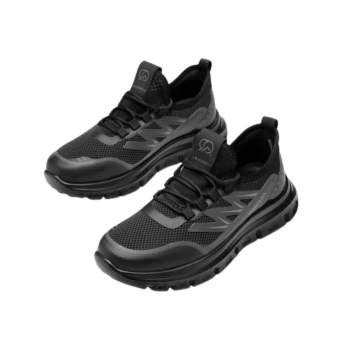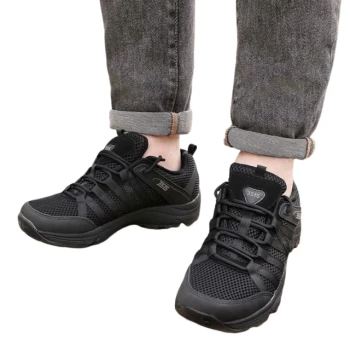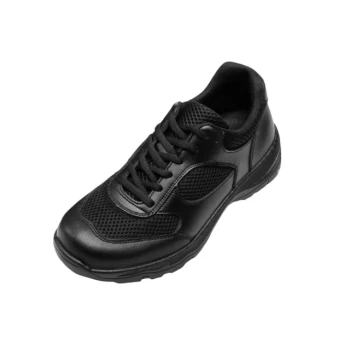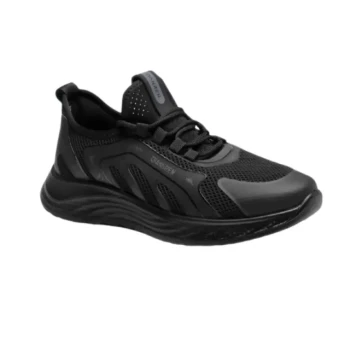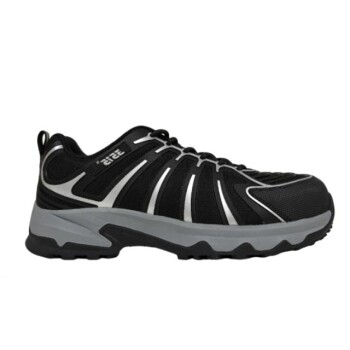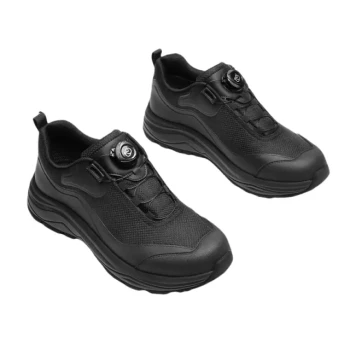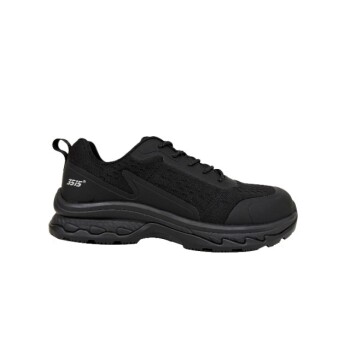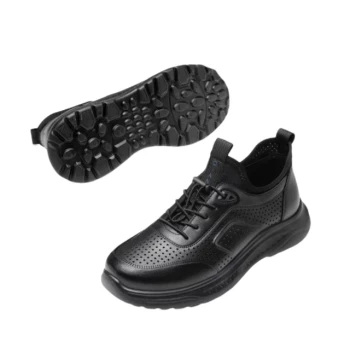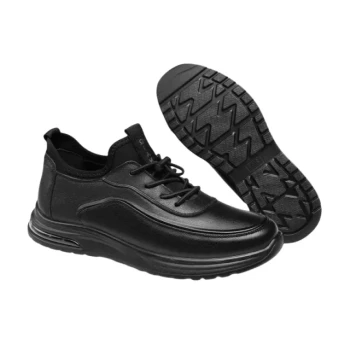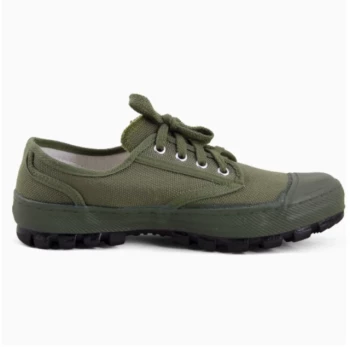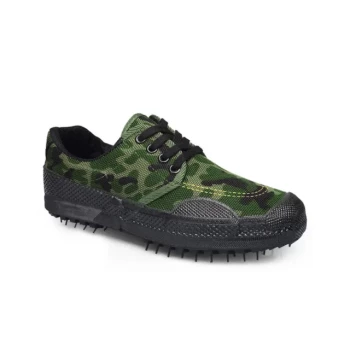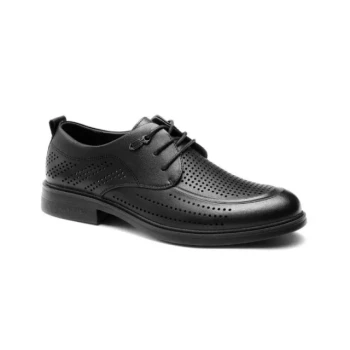For walking exclusively on pavement, the best type of shoe is a road-running shoe. These shoes are specifically engineered to handle the repetitive impact of hard, uniform surfaces like concrete and asphalt, providing the necessary cushioning and durability in a lightweight design.
The core challenge of walking on pavement is managing the constant shock to your joints. The ideal shoe is not just any comfortable sneaker, but a purpose-built tool designed with sufficient cushioning to absorb impact and a durable outsole to resist abrasion.

Why Pavement Demands a Specific Shoe
Walking on hard, man-made surfaces creates a consistent, high-impact force that travels from your feet up through your legs and spine. Unlike soft trails, pavement offers no natural give. Your shoes must provide all the shock absorption.
The Role of Cushioning
The primary job of a pavement shoe is to dampen the shock of each footstrike. This is achieved through the foam midsole.
Look for shoes with a substantial amount of cushioning, sometimes referred to as "stack height." A heel stack height of at least 30mm is a good benchmark for providing sufficient protection on concrete.
However, the foam should be responsive, not overly soft. Excessively plush cushioning can feel unstable and lead to fatigue over long distances.
The Need for a Durable Outsole
Pavement is highly abrasive and acts like sandpaper on the bottom of your shoes. A standard shoe's sole will wear down quickly under these conditions.
The best shoes for pavement use highly abrasion-resistant rubber compounds for their outsoles. This ensures the shoe lasts longer and maintains its grip and structure over hundreds of miles.
Analyzing Your Footwear Options
While several shoe types can be used for walking, they are not all optimized for the unique demands of pavement.
The Top Choice: Road-Running Shoes
Road-running shoes are the ideal candidate. They are lightweight, flexible, and engineered with the precise balance of cushioning and responsiveness needed for hard surfaces. They are an excellent choice for brisk walking or if you want a single pair for both walking and running.
The Sturdy Alternative: Hiking Shoes
Hiking shoes are built for stability and durability on rugged terrain. They are a good option for varied urban environments that include cobblestone streets, gravel paths, or park trails. For walking exclusively on flat pavement, they are often heavier and stiffer than necessary.
The Hybrid: Trail-Running Shoes
Trail-running shoes serve as a compromise between road-runners and hikers. They offer more durability and grip than a road shoe but are more flexible and lighter than a hiking shoe. They excel on mixed-terrain walks but are not as specialized for pure pavement as a road-running shoe.
Understanding the Trade-offs
Choosing footwear always involves balancing competing features. Understanding these trade-offs is key to avoiding common pitfalls.
Flexibility vs. Stability
Road-running shoes prioritize flexibility to allow for a natural foot motion. Hiking shoes, in contrast, are often stiffer to provide stability on uneven ground. Using a stiff hiking shoe on flat pavement can feel clunky and inefficient.
Weight vs. Protection
Heavier shoes, like many hikers, offer more protection and support. However, that extra weight can cause fatigue more quickly during a brisk walk on a flat surface. Lightweight road-running shoes are designed for efficiency and comfort over miles of pavement.
Making the Right Choice for Your Walk
Select your shoe based on the primary surface where you'll be walking.
- If your primary focus is walking exclusively on sidewalks and roads: Choose a well-cushioned road-running shoe for its optimal blend of shock absorption and low weight.
- If your walks include a mix of pavement, park paths, and gravel: A trail-running shoe provides the versatile grip and durability you need for varied surfaces.
- If your route involves cobblestones or you require maximum ankle support: A lightweight hiking shoe offers the best stability and protection for challenging urban terrain.
Equipping yourself with the correct shoe is the most critical step you can take to ensure a comfortable and injury-free walk.
Summary Table:
| Shoe Type | Best For | Key Features |
|---|---|---|
| Road-Running Shoes | Exclusive pavement walking | Maximum cushioning, lightweight, abrasion-resistant sole |
| Trail-Running Shoes | Mixed terrain (pavement & trails) | Versatile grip, durable, more flexible than hikers |
| Hiking Shoes | Challenging urban terrain (cobblestones) | Maximum stability, ankle support, heavy-duty construction |
Ready to find the perfect shoe for your needs?
As a large-scale manufacturer, 3515 produces a comprehensive range of high-performance footwear for distributors, brand owners, and bulk clients. Our production capabilities encompass all types of shoes and boots, including specialized road-running shoes designed for optimal comfort and durability on pavement.
Let us help you equip your customers with the right footwear. Contact our team today to discuss your manufacturing needs and discover how we can bring value to your business.
Visual Guide

Related Products
- Wholesale Breathable Training Shoes Custom Athletic Footwear Manufacturer
- Wholesale Lightweight Cushioned Athletic Sneakers for Custom Bulk Production
- Durable Rubber-Soled Utility Shoes for Wholesale & Custom Brand Manufacturing
- Lightweight Breathable Training Shoes for Wholesale & Custom OEM Manufacturing
- Wholesale Durable & Breathable Training Shoes for Custom Brands
People Also Ask
- What materials are best for athletic activities in warm climates? Stay Cool with Moisture-Wicking Fabrics
- How do athletic shoes with non-slip features differ from regular ones? Discover the Grip Advantage
- What are the benefits of breathable materials in work shoes? Enhance Comfort & Health for Your Workforce
- What should be considered when choosing smart trainers for business casual? A Guide to Professional Style
- What are the characteristics of canvas as a shoe material? A Guide to Lightweight, Breathable Footwear

